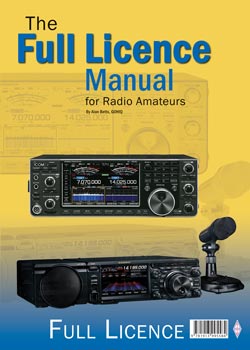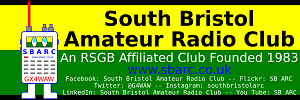
Recognise Your Talent and Experience: The Full Licence
You have worked hard to get your amateur radio licence, and have progressed through to being an Intermediate licence holder. Maybe you are ready now to take on the UK’s ultimate amateur radio qualification: the Full licence.
A lot of privileges and responsibilities come with a Full licence, not least from the fact that you will be able to transmit at up to 1 kiloWatt of power (on “primary” bands). You will also receive with your Full licence the ability to legally transmit from many countries in the world and apply for Notices of Variation for Special Event Callsigns and repeaters.
Studying for your Full Licence
We are not going to pretend that getting a Full licence will be easy. A complex technical exam has to be passed that requires considerable study for success. So you must be prepared to invest a good amount of time and effort in your studies. The examination is entirely theory based, with no practical training elements.
The table below contains links to printable versions of the course notes.
| Topic Number | Printable Notes | Presentation Slides | Video |
|---|---|---|---|
| Introduction | |||
| 1 | Licensing Conditions and Station Identification | ||
| 2 | Technical Aspects | ||
| 3 | Transmitters and Receivers | ||
| 4 | Feeders and Antennas | ||
| 5 | Propagation | ||
| 6 | Electromagnetic Compatibility (EMC) | ||
| 7 | Operating Practices and Procedures | ||
| 8 | Safety | ||
| 9 | Measurements and Construction | ||
| 10 | There is no Topic 10 at Full Level as the Full Syllabus does not contain any practical elements | ||
The Full Licence Radio Communications Exam
The Full examination is similar in format to the Intermediate and Foundation Exams that you have already successfully sat. This time the exam consists of 58 multiple-choice questions each with four possible responses of which only one will be completely correct. You are permitted 120 minutes to answer the questions and the pass mark is 35/58 or 60%.
| Subject | Number of Exam Questions | Percentage of Exam Questions |
|---|---|---|
| Licensing Conditions and Station Identification | 7 | 12.07% |
| Technical Aspects | 11 | 18.97% |
| Transmitters and Receivers | 12 | 20.69% |
| Feeders and Antennas | 4 | 6.90% |
| Propagation | 3 | 5.17% |
| Electromagnetic Compatibility (EMC) | 10 | 17.24% |
| Operating Practices and Procedures | 2 | 3.45% |
| Safety | 4 | 6.90% |
| Measurements and Construction | 5 | 8.62% |
| TOTAL | 58 | 100.01% |
Like the Intermediate Exam the focus is on Technical Aspects, but also on Transmitters and Receivers and EMC, this is because the higher power levels permitted by the Full Licence have a greater potential for interference and it is necessary to understand the internal operation of the equipment in use; its potential for causing interference and how to avoid it.
Although it is possible to pass the Full Exam without either the Technical Aspects and Transmitters and Receivers areas it is unlikely that this approach will be successful as a candidate would have to score 35 out of 35 in all of the other areas. Passing the Full Exam requires knowledge in all of the areas to be successful.
What Happens After the Full Licence Exam?
The next step is to register your exam pass with the UK communications regulator Ofcom, who are responsible for issuing amateur radio licences. If you apply for your Full licence on the Ofcom website, it is free of charge. Visit the Ofcom website to find out more. Ofcom will then issue you with your new, upgraded radio licence and you can get started immediately on the Full licence frequency allocations at up to 1 kiloWatt of power on “primary” bands.
For almost all radio amateurs receiving a Full licence is a very proud moment, indicating as it does that their skills and knowledge of amateur radio have been tested to the highest level possible in the UK. A whole new world awaits of global operating, contesting, expeditions and Special Events.
